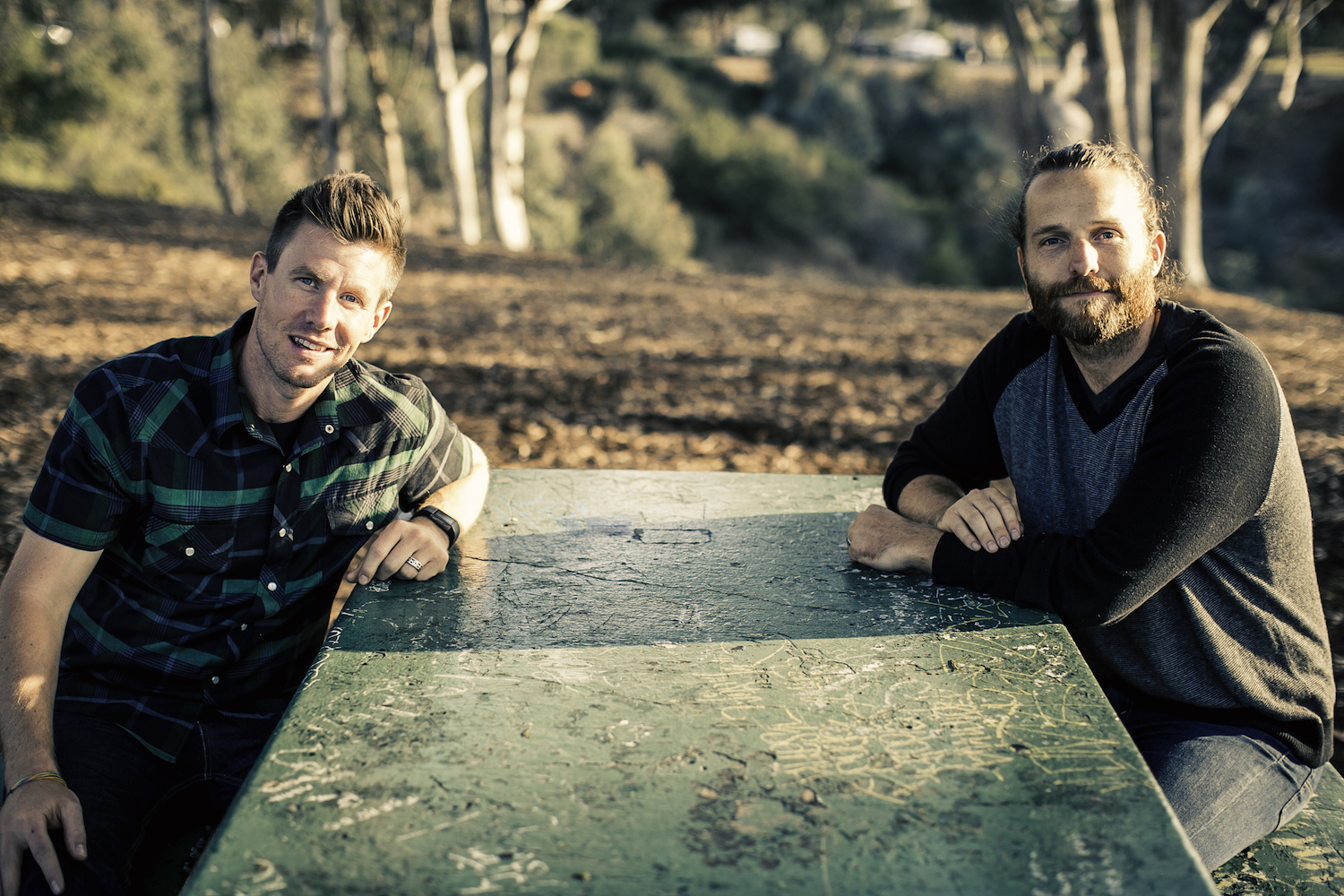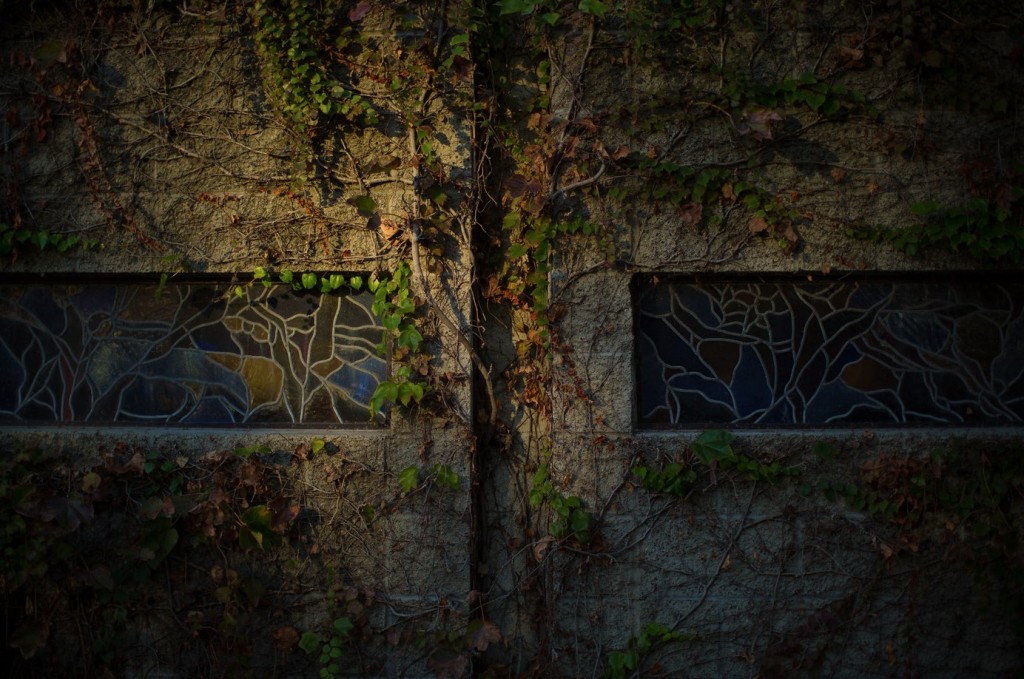![Fuller Seminary's Prayer Garden]()
“Silence.” Once we have said it, we have destroyed it.
“Mildred has died.” The three-word message from CC was waiting by the phone as I stepped in the door, home from a two-day conference. I drove immediately to the Turner horse ranch, ran through the light rain to the family-room door, saw my friend CC sitting on the far side, withdrawn, uncomfortable with gathered family and neighbors pressed around him. I stepped inside. His flat palm gestured stay, and he made his way across the room, collecting his coat. “Glad you came; I’ve got to get out of here. Can we walk?” I nodded. We stepped back out into the drizzle, and he set off down the lane to the road with me walking silently beside him.
As a young freshly minted pastor out of seminary, I had first called on CC three years before. He was an outcast alumnus, a myth, and chief of sinners from my congregation. Theologically trained, a repeated candidate for the ministry, he had gotten into conflict with church leaders, dropped out, and never returned as his show, race, and stud horse ranch became nationally successful. His lifestyle had changed as well: a line of mistresses, then a secret second family, total cutoffs from most old friends. He was the whispered butt of stable or water cooler jokes linking his sexuality to his blue ribbon stallion; his was the prize scalp to be won by visiting evangelists; among the truly good people, he was a pariah. We, however, somehow connected. A brilliant man, widely read, with a photographic memory—if we allude to Shakespeare, he recites the scene; if one of us quotes a Scripture, he repeats the whole context; if we explore philosophy or theology, he has forgotten little, having immediate access to virtually anything he once read—Augustine, Luther, Calvin, Menno, Wesley, Finney, Hodge, Bonhoeffer, Barth. Our conversations were playful for him, a seminar for me. Our friendship had cemented. And at last, Mildred, his wife of fifty years, has finally left him.
Now we are trudging through rain on muddy country roads—one mile west, one mile south, a mile back east, then north to round the block. My suit is slowly getting soaked, my Italian leather shoes coming apart; we walk. He is silent in his mourning. He is shamed before the community that has ostracized him who are now gathering to remember her, to declare her a saint. He walks, head down, sighing now and then, soul frozen in complicated grief. I feel all this in the silence. We round the final corner, turn back to the big house streaming light and people. He will have to go in and face them again.
I have spoken no more than a half dozen words, and felt that they were unnecessary. But step by step, I am searching for the right thing to say as we end our walk. I need to talk. He does not. But certainly my seminary training has something to offer? I find nothing. We stop at the door; he throws an arm around my sodden shoulders. “You’re wet,” he says. “Go on home.” “Yes, but it was worth every drop of it.” That is the best I can come up with.
He shakes the water from his broad-brimmed hat, slaps it against his thigh, then looks me in the eye. “I’ve been outside far too long,” CC says. “When the funeral is over, can we talk about how I can come in again?” My answer is a second silent hug. I drive home, feeling a total, utter failure as a pastor. An hour walking on the road, and I said nothing. Silence. I tell no one about my pastoral shame. It will be later, much later, before I realize that, in spite of myself, silent presence was probably the best pastoral care I could have given.
To every thing there is a season . . .
A time to weep and a time to laugh,
A time for mourning and a time for dancing,
A time for silence and a time for speech. (Eccles. 3:4, 7)
Silence is the gift we give when words are untrustworthy, unnecessary, unwise.
“Those who know do not talk; those who talk do not know.”
—Chinese wisdom from the Tao Te Ching
“If your speech is no better than silence, be silent.”
—Dionysius the elder, 4th century BCE
“Better to remain silent and be thought a fool, than to speak out and remove all doubt.”
—Abraham Lincoln
Silence precedes speech: only one who has learned to be silent is prepared to speak.
“No moment of silence is a waste of time.”
—Quaker Rachel Needham
“It is often more effective to fast with words than with food.”
—Medieval Rabbi Vilna Gaon
“The deeper one’s nature, the more time is necessary for solitude.”
—Søren Kierkegaard
Abraham Joshua Heschel wrote, of silent reverence: “In every moment there is something sacred at stake, and it is the reason that the approach of the pious to reality is in reverence.” Reverence, he defines, is recognition of the extremely precious—morally, intellectually, spiritually, all that we revere—the sacred. “To sense the sacred is to sense what is dear to God,” he says. “Just to be is a blessing: just to live is holy.”
“Nothing in all creation is so like God as silence.”
—Meister Eckhart
“Those who hear the word of God can also hear his silence.”
—St. Ignatius of Antioch
Richard Rohr’s Prayer from Psalm 46:10:
“Be still and know that I am God.
Be still and know that I am.
Be still and know.
Be still.
Be.”
“In silence and hope shall be your strength.” (Isa. 35:15)
When we learn how to speak and what to say, how to articulate our theology, how to translate our theory, we must earn the right to say it—through the practices of silence, patience, presence. Silence is the language of respect; patience of waiting; presence of solidarity.
“Be quick to listen, slow to speak.” (Jas. 1:19)
“Love is patient. . . . There is nothing love cannot face, there is no limit to its faith, its hope, its endurance. (1 Cor. 13)
Job and friends: seven days of silence waiting for the sufferer to speak first.
Ezekiel: at the end of his journey, to be present with Judean exiles: “For seven days I sat in silence dumbfounded” (2:15).
Jesus apparently practiced thirty years of silence until he “opened his mouth and taught them.” After the Jordan call, forty days of desert silence.
Paul: after radical change, retreated to a silent retreat to Arabia (Gal. 1:17).
SILENCE: THE LANGUAGE OF THE SOUL
![Fuller Seminary Campus]()
Silence has its own taxonomy of meanings and uses, so each culture, each group, each person perceives and attaches meanings in encountering a silent other. Communications theorists have parsed twenty meanings of silence. They range from “I have nothing to say, I don’t have anything to contribute” all the way to “Nothing needs to be said, we understand each other intimately.”
Silence has its own grammar; it is a form of speech—ante-silence, the “before-silence” that anticipates words; present silence; and post-silence, the “after-silence” that responds to the spoken—silence is continuous with the stream of communication. Silence is a language of great eloquence. It is our continuous response to life, to the neighbor, to the other, since we cannot not communicate.
There is a silence of denial and a silence of truthfulness. There is a silence of anger and a silence of peace. There is a silence of pride and a silence of humility. There is a silence of hate and a silence of love. There is a silence of distance and a silence of intimacy. There is a silence of resentment and a silence of acceptance. There is a silence of despair and a silence of hope.
Silence is the core of our being, Silence is the voice of the soul. Silence is the strength of interior life, Silence is the inner well of charity. Without silence, our moral convictions are only words. Without silence to preserve them, all virtues become corrupt. Without silence our best intentions are mere noise. Silence is at the center of our moral agency. One who loves God loves silence also. One who loves Christ loves the silence of the desert. One who knows the Spirit knows the winds of silence. If we root our lives in silence we grow deep into God.
Flannery O’Connor, the great Catholic novelist, said of the Eucharist, “Well, if it’s a symbol, to hell with it. . . . It is the center of existence for me; all the rest of life is expendable.” When I’m among Quakers, I discover that they feel that way about silence. “Holding holy silence,” gently, like holding a baby bird, they say, is worship, is reverence, is the practice of the Eucharist. The silent presence of the Holy Spirit working within is called “sifting silence.” It separates the worthwhile from the worthless. If we are never silent, then we never have to look at the truth about ourselves. Noise keeps us from confronting self; noise lets us avoid. Spiritual silence is a scalpel. It cuts through layers of our fears and insecurities. Unlike surgery, we are not anesthetized during silence, we feel each cut. Holy silence cuts through obfuscation, it is painful—which may be why there aren’t many desert fathers today. Or Quakers.
When you have learned the gift of silence, learned how to listen deeply to another, you will offer active, not passive, silence. Silence is a high form of activity—attending in patience; attuning in solidarity; imagining and empathizing in presence. What if you offered others a hospitable and welcoming silence, a wild and enduring patience, a nondefensive and vulnerable, loving presence?
PATIENCE: THE LANGUAGE OF LOVE
Patience means waiting; it means quietly and without protest awaiting your turn. Being patient is, in some sense, being like the supremely patient God. Being patient means waiting for a God whose patience outdistances and outlasts our own—we have only a brief span of life to wait; God has eternity.
“Patience is waiting. It is sitting uneasily in a “not-yet” without control of its own fulfillment. Patience knows that it waits for what is to come, but it does not know if what is to come will ever be present. If it were not so, it would not be patience. Patience is something that we may not truly have until we are impatient with it. Hence I cannot conclude by assuring you that your patience—our patience—will be rewarded in the way we would like it to be. We know that it will be rewarded insofar as we have been promised this by the one in whom we trust . . . it makes us tremble. As we pray for patience now, perhaps we will tremble. Indeed, we should do both. We should pray and we should tremble.”
—Peter Blum
“Christians believe that through cross and resurrection we have been given the time to be patient in a world of impatience. I am often in a hurry and busy, but this is not the same thing as impatience. Patience does not mean “doing nothing.” Rather, patience is sticking to ‘what you are doing because you believe that it is worthy and worthwhile.”
—Stanley Hauerwas, citing John Howard Yoder
“One’s willingness to be wronged, to absorb evil patiently without retaliating, helps to break the cycle of vengeance and opens up the possibility for healing and peace. Hence though forgiveness is a constitutive practice of peace (the act of forgiveness itself helps to constitute peace), forgiveness is unimaginable apart from patience.”
—Philip Kenneson
“Learning to weep, learning to keep vigil, learning to wait for the dawn. Perhaps this is what it means to be human.”
—Henri Nouwen
“Love is patient.” (1 Cor. 13)
“The fruit of the Spirit is love—the evidence of love is patient longsuffering.” (Gal. 5:22)
(Makrothumia is patience connected to love;
hupomeno is endurance rooted in hope.)
“Waiting patiently in expectation is the foundation of the spiritual life.”
—Simone Weil
When we learn the virtue of patience, we let go of control. When we have learned the necessity of patient waiting before God, and practice that silence in awareness of divine presence, we may then begin to use words, cautiously, carefully: “In your prayers do not chatter, like those who think the more they say the more likely they will be heard” (Matt. 6:7).
Attentiveness to the presence of God requires patient silence; the door to such solitude opens only from the inside; patient silence and solitude allow us to attune to God who is there. (Oh, it’s You again, You!) In solitude one is not alone, but in solidarity with a great company of spiritual co-travelers, people from the great extended past, people present who dwell in my inner community. We meet and in meeting are met by One who knows us all. (You again, You!) And in the presence of other worshippers, in solidarity as we gather as God’s people, we can have eyes to see the presence of Christ appearing in the circle center. (You, You again, You, always You. You, You.)
Practicing the virtue of silent awe. A devout Jew is to recite one hundred blessings (berakhot) a day. At minimum, the eighteen blessings of amidah, three times a day. This is to embody “the practice of amazement.” A spirituality of “oohing”and “aahing”calls for one hundred ooohs and aaahs a day. How often have you oohed and aahed today?
PRESENCE: THE PRIMARY METHOD OF GIVING CARE
Bishop John V. Taylor puts it well: “The Christian, whoever he or she may be, who stands in the world in the name of Christ, has nothing to offer unless he or she offers to be present, really and totally present, really and totally in the present.” Presence is not a method; it is embodying grace, incarnating love; it is fleshing out the steadfast love of God. “We are not free to choose or reject a theology of presence. Presence as incarnation is fundamental to all witness. All ministries of the church are rooted in being present” (Wilbert Shenk).
“Presence is not a method; it is embodying grace, incarnating love; it is fleshing out the steadfast love of God.”
The care-response, what Martin Buber called “being for others,” or “being there,” states that personhood is realized only in the presence of another. Presence is the medium in which selfhood is realized. The cowboy philosopher Texas Bix Bender, in Don’t Squat with Your Spurs On, states: “A body can pretend to care, but they can’t pretend to be there.” Jewish philosopher Woody Allen: “Ninety percent of life is just showing up.”
The primary reality—not method—of care-giving is faithful presence that provides support, nurture, and respectful care. To care for another is to bid another to grow. Mayeroff (On Caring) has taught us that faithful presence has no agenda other than the growth and personhood of the one receiving care, and the character and content of the caring relationship is more important than its successful outcome. Out of our experience of God’s faithfulness, we learn how to be faithful to one another in our willingness to be present with all our vulnerabilities. Our presence to one another mediates God’s presence to us. The abiding certainty of God’s presence is not and cannot be a substitute for our presence—being the face of God to each other.
God’s compassionate presence is mediated in the caring presence of God’s people. Just as we know that nothing—pain, suffering, even death—can separate us from the compassionate love of God, so we stubbornly refuse to let anything intervene in our presence with those who suffer. “Presence,” says Wendy Farley, “demonstrates that nothing can separate God from us, but that suffering can be a veil that hides this loving presence. In the midst of suffering, compassion labors to tear the veil.”
The profound need to be listened to, to be heard, the longing for a listener who will be silent enough to practice the hospitality of listening, is an essential part of our humanity. The need to tell one’s story and for one’s story to be heard, recognized, validated, is an essential element of creative and healing community. Hearing, not just listening, creates community; hearing, not just waiting for one’s turn to take the stage, creates a bond, a commitment to life together, and becomes an invitation to live, to grow, to become.
When we embody presence, we lower defenses so the other can see through to the soul. The defended self is barely, perhaps rarely present.
“Make your ego porous. Will is of little importance, complaining is nothing, fame is nothing. Openness, patience, receptivity, solitude is everything.”
—German poet Rainer Maria Rilke
“When we put ourselves at the opposite pole of the ego, we are in the place where God is.”
—Abraham Joshua Heschel, Man’s Quest for God
“The turtle lays a thousand eggs with no one knowing;
When a hen lays an egg, the whole country is informed.”
—Malay proverb
Loquacious egotism is the anesthetic that dulls the pain of stupidity. The capacity to be nourished by silence is a primary indication of size and weight as well as height and depth of soul. Great souls find peace in silence; small souls seek to be distracted by chatter and anaesthetized by noise.
PATIENT PRESENCE: HEARING SILENCE INTO SPEECH
![Fuller Seminary Campus]()
We may speak of various types of silence in the face of domination or oppression:
Apathetic: silence of despair
Embarrassed: silence of shame
Confounded: silence of confusion
Empowered: silence of discovery
Patient: silence of endurance
Awed: silence of hope
United: silence of courage
So as a result, one is
Dumb
Helpless
Voiceless
Voiced
Sustained
Articulate
Powerful
Pre-discourse silence . . . post-discourse silence.
It is risky to confront silencing—dominant groups who silence marginalized groups through coercion, hegemony, entitlement/privilege, are even more willing to silence those who point out how oblivious we are to the obvious: “The emperor has no clothes.” Small wonder the brightest and best among us are willing to hide behind silence. Heidegger, for example, the genius who wrote the most brilliant treatise on authentic silence and Dasein (being there), was conveniently silent before the Nazis.
“We shall have to repent in this generation not merely for the hateful words and actions of the bad people but for the appalling silence of the good people.”
—Martin Luther King Jr., “Letter from a Birmingham Jail”
Who dares break the silence by speaking the truth about world domination, inhuman exploitation, racial fantasies of entitlement, historic institutionalization of brutalities, and dehumanization? Doris Lessing, Nobel Prize winning South African novelist, in The Sirian Experiments, constructs a cosmic history of the earth told from an extra-planetary perspective. As two leaders on the star Sirius are discussing the future of earth, one runs his finger along a map of Eurasia and says:
“Here, in the Northwest fringes, in these islands, in this little space, a race is being formed even now. It will overrun the whole world. . . . This race will destroy everything. The creed of this white race will be, if it is there, it belongs to us. If I want it, I must have it. If what I see is different from myself then it must be punished or wiped out. Anything that is not me, is primitive and bad . . . and this is the creed that they will teach to the whole of [Earth].”
Soares-Prabhu, the Jesuit theologian from Puna, India, who was killed by a lorry hitting his bicycle on the day of his retirement, after citing Lessing, asks, “‘Everything that is not me is primitive and bad.’ Could there be a neater description of the Christian-colonial prejudice that inspired conquistador and missionary alike? . . . The roots of the great tree of Christian prejudice run deep, and its fruits, to those who have tasted them, are bitter. We need to look at the tree squarely and ask ourselves how it is that the seed sown by the unprejudiced and nonviolent Jesus has grown to this? What evil force has nurtured its monstrous growth?”
Catholic theologians who have taught us to speak of “the Divine preference for the poor” remind us that God is in every encounter with the poor. They stand in for God: what we do to/for them, we do to/for God. They mediate God to us. As Jon Sobrino says: “Oppressed persons are the mediation of God because, first of all, they break down the normal self-interest with which human beings approach other human beings. Merely by being there the oppressed call into question those who approach, challenging their being human, and this radical questioning of what it means to be a human being serves as the historical mediation of our questioning of what ‘being God’ means. That is why those who approach the oppressed get the real feeling that it is they who are being evangelized and converted rather than those to whom they seek to render service.”
The qualification for graduation is not just “have you found your voice?” But, as theologian Nelle Morton asks, “Can you hear others into speech?” When you listen, it is not just to understand, but to hear the other into self-discovery and self-understanding.
“Moving from silence into speech is for the oppressed, the colonized, the exploited, and those who stand and struggle side by side, a gesture of defiance that heals, that makes new life and new growth possible.”
—bell hooks, Talking Back
When we have heard the stifled cries of the oppressed, seen the silent pain of the poor, sensed the hidden wound of the abused, we dare not be spectators; we must be advocates. The silences of injustice are ours to break.
“The silence of the victim is one thing, that of the killer another.
And the silence of the spectator, still another.
There is a creative silence; there is a murderous silence.”
—Elie Wiesel, Somewhere a Master
Our task is to give pain a voice, to hear and give voice to the cries of hell.
Rowan Williams cites the gutsy words of Martin Luther: “Luther asks . . . ‘do you know what it is like to be in hell, because only if you have been in hell can you be a theologian’ (a statement which I think is true [Williams adds], and should be engraved on the portals of every theological institution in the world).”
A lifetime of silence, patience, and presence, Thomas Merton wrote, “is ordered to an ultimate declaration, which can be put into words, a declaration of all we have lived for.” Life is not to be regarded as an uninterrupted flow of words that is finally silenced by death. Its rhythm develops in silence, surfaces in moments of expression, returns to deeper silence, culminates in a final declaration, then ascends quietly into the silence of Heaven.
We must all die. If the spirit that kept the flame of physical life burning in our bodies took care to nourish itself with the oil that is found only in the silence of God’s charity, then when the body dies, the spirit itself goes on burning the same oil, with its own flame. But if the spirit has burned all along with the base oils of passion or egoism or pride, then when death comes, the flame of the spirit goes out with the light of the body because there is no more oil in the lamp.
—Thomas Merton, No Man is an Island
Let your life burn brightly with the oil of God’s quiet, patient charity. Love God lavishly; love your neighbor sacrificially. Be nourished with the oil of divine love. Go out and hear the silent into speech
by seeing the face of Jesus appear among the least of these, our sisters and brothers. Go out and care for the poor and the oppressed
by joining with God in a preference for the poor. Go out and offer the presence of such love and compassion
that it can be mistaken for the presence of Christ. Let your silence be attendance and reverence, not absence or avoidance. Let your patience be endurance and perseverance, not acquiescence. Let your presence be the practice and experience of God-with-us.
+ Dr. Augsburger originally delivered “Silence, Patience, Presence” as the Baccalaureate address to Fuller’s graduating students May 2012. Listen to the full address here.
The post Silence, Patience, Presence appeared first on Fuller Studio.
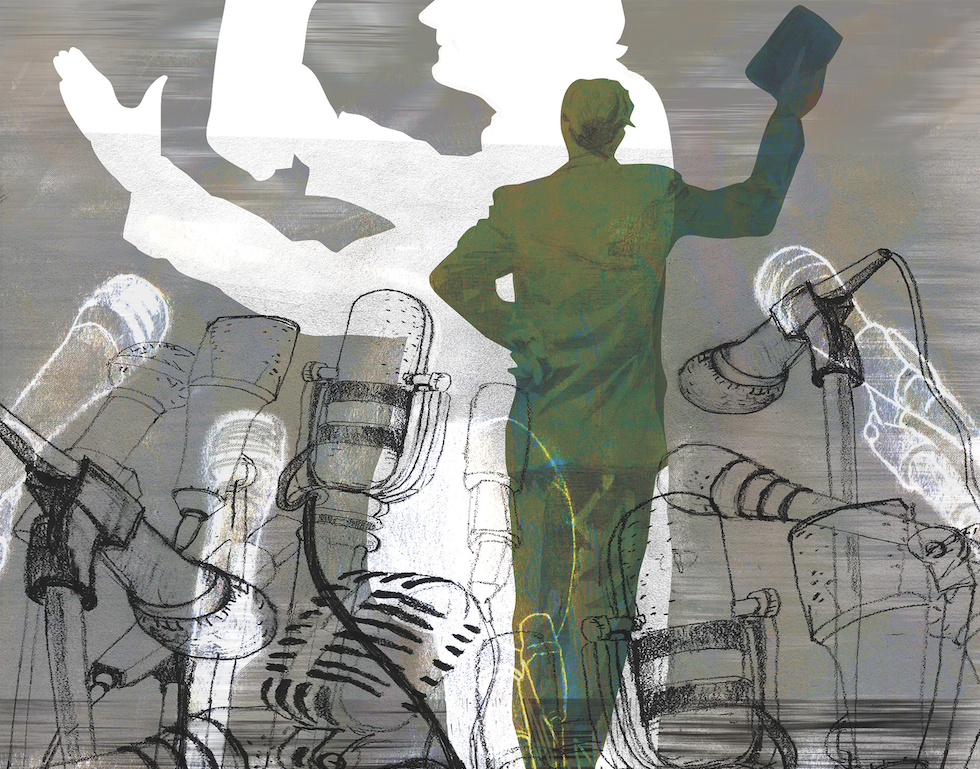
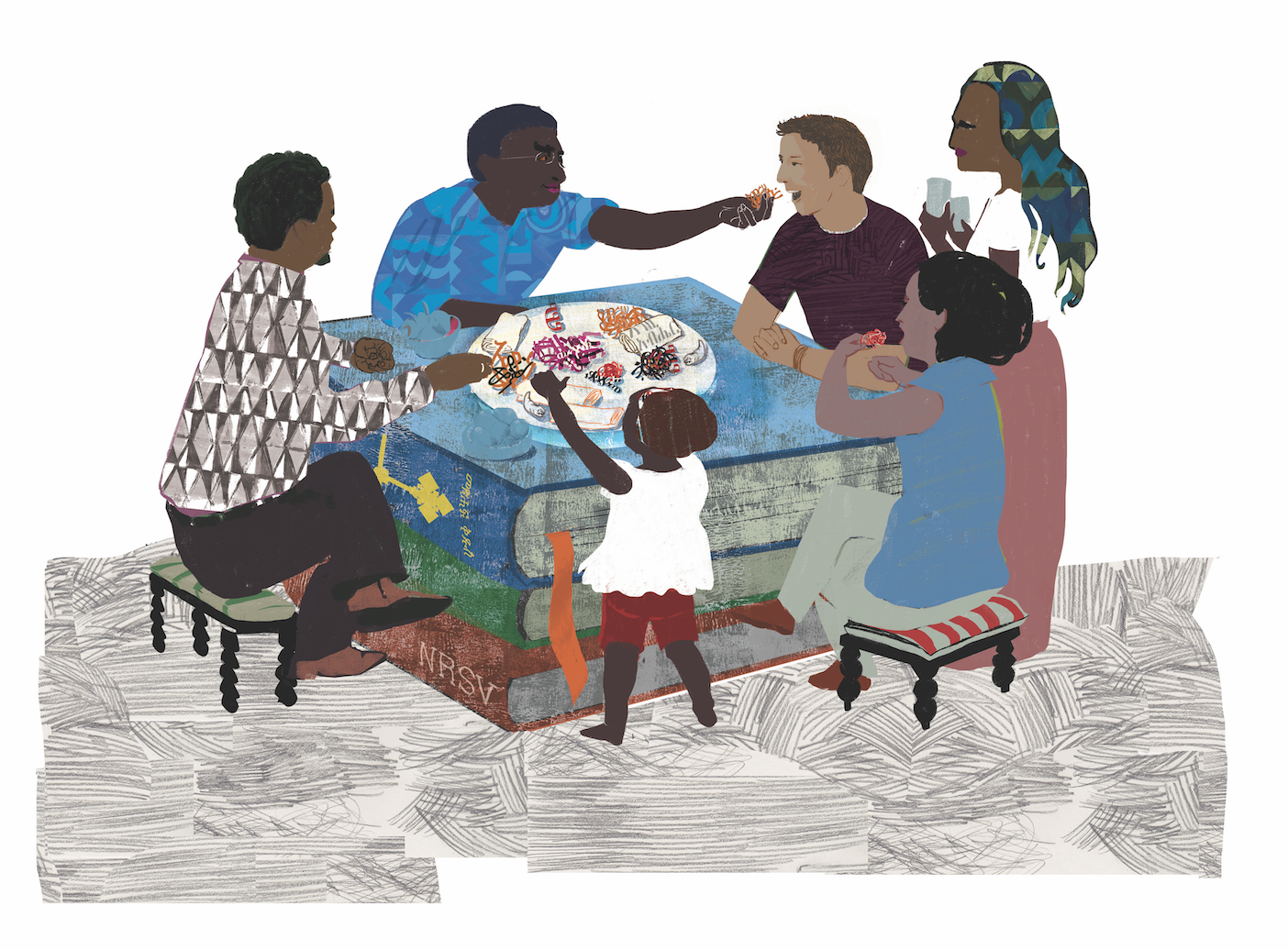
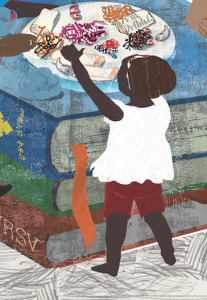 Secondly, because of their own experiences, African biblical interpreters often challenge other readers in terms of what they notice and prioritize in biblical texts. Conceptual frameworks such as honor and shame, poverty and power, patronage, or extended family relationships may be central to the interests and concerns of the biblical authors themselves but overlooked by Western readers for whom these are not daily categories of concern. That Nehemiah was motivated by a sense of shame and his desire to restore honor to his ancestral homeland, as mentioned above, is one such example.6 In terms of leadership and power, my students in Nairobi were intrigued by the framing of the relationship between Paul and Apollos in 1 Corinthians 16:12: “Now concerning our brother Apollos, I strongly urged him to visit you with the other brothers, but he was not at all willing to come now. He will come when he has the opportunity.” All too familiar with hierarchically organized societies where a senior leader (like Paul) might be threatened by a successful younger figure (like Apollos) and take steps to suppress his activity, these students noticed the mutual respect, openness, and deference shown by Paul in inviting Apollos to continue connecting with the Corinthians, and by Apollos in choosing not to get involved at that point. What I had barely noticed, or taken as a simple statement of fact, my students recognized as a model of generous relational détente between two church leaders. Similarly, in Paul’s letter to Philemon, they recognized that Paul’s seeming humility is actually the rhetorical cloak of an established leader gracefully and perhaps humorously telling subordinates what to do: “I, Paul, do this as an old man, and now also as a prisoner of Christ Jesus….So if you consider me your partner, welcome him as you would welcome me…I say nothing about your owing me even your own self” (vv. 9, 17, 19).
Secondly, because of their own experiences, African biblical interpreters often challenge other readers in terms of what they notice and prioritize in biblical texts. Conceptual frameworks such as honor and shame, poverty and power, patronage, or extended family relationships may be central to the interests and concerns of the biblical authors themselves but overlooked by Western readers for whom these are not daily categories of concern. That Nehemiah was motivated by a sense of shame and his desire to restore honor to his ancestral homeland, as mentioned above, is one such example.6 In terms of leadership and power, my students in Nairobi were intrigued by the framing of the relationship between Paul and Apollos in 1 Corinthians 16:12: “Now concerning our brother Apollos, I strongly urged him to visit you with the other brothers, but he was not at all willing to come now. He will come when he has the opportunity.” All too familiar with hierarchically organized societies where a senior leader (like Paul) might be threatened by a successful younger figure (like Apollos) and take steps to suppress his activity, these students noticed the mutual respect, openness, and deference shown by Paul in inviting Apollos to continue connecting with the Corinthians, and by Apollos in choosing not to get involved at that point. What I had barely noticed, or taken as a simple statement of fact, my students recognized as a model of generous relational détente between two church leaders. Similarly, in Paul’s letter to Philemon, they recognized that Paul’s seeming humility is actually the rhetorical cloak of an established leader gracefully and perhaps humorously telling subordinates what to do: “I, Paul, do this as an old man, and now also as a prisoner of Christ Jesus….So if you consider me your partner, welcome him as you would welcome me…I say nothing about your owing me even your own self” (vv. 9, 17, 19). “Think about the metaphor of a garden when you think about culture care. . . . We are as gardeners who cultivate the soil; we tend to those plants so that they bear fruit. The vision of the Brehm Center is to provide a resource-rich ecosystem that allows for students and artists to understand their calling in the world. It’s for them to go out from here to the communities that they serve and bear fruit, thinking generatively about creating new things in those communities but also generationally, thinking about investing in the people in their community.”
“Think about the metaphor of a garden when you think about culture care. . . . We are as gardeners who cultivate the soil; we tend to those plants so that they bear fruit. The vision of the Brehm Center is to provide a resource-rich ecosystem that allows for students and artists to understand their calling in the world. It’s for them to go out from here to the communities that they serve and bear fruit, thinking generatively about creating new things in those communities but also generationally, thinking about investing in the people in their community.” +
+
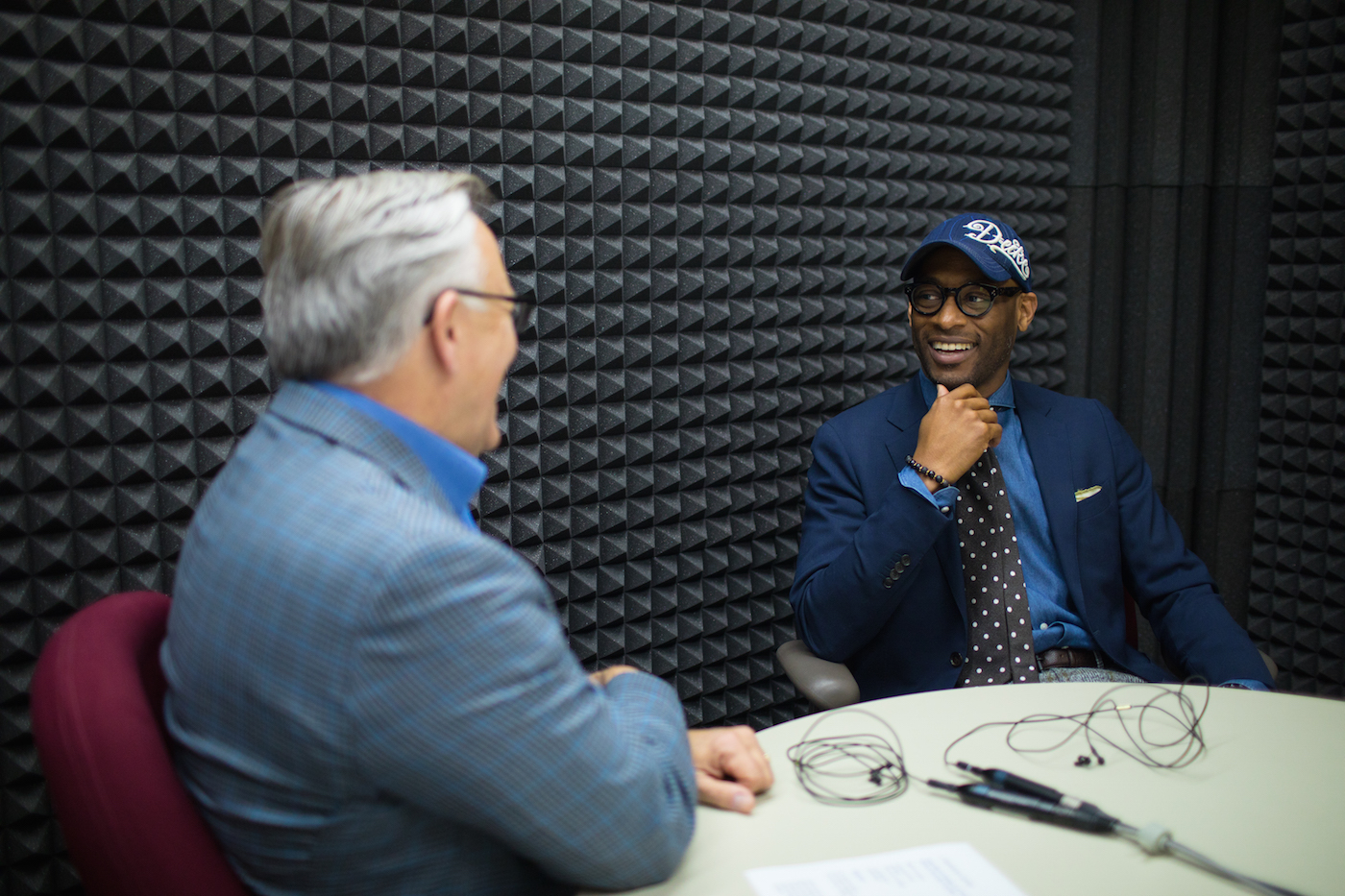


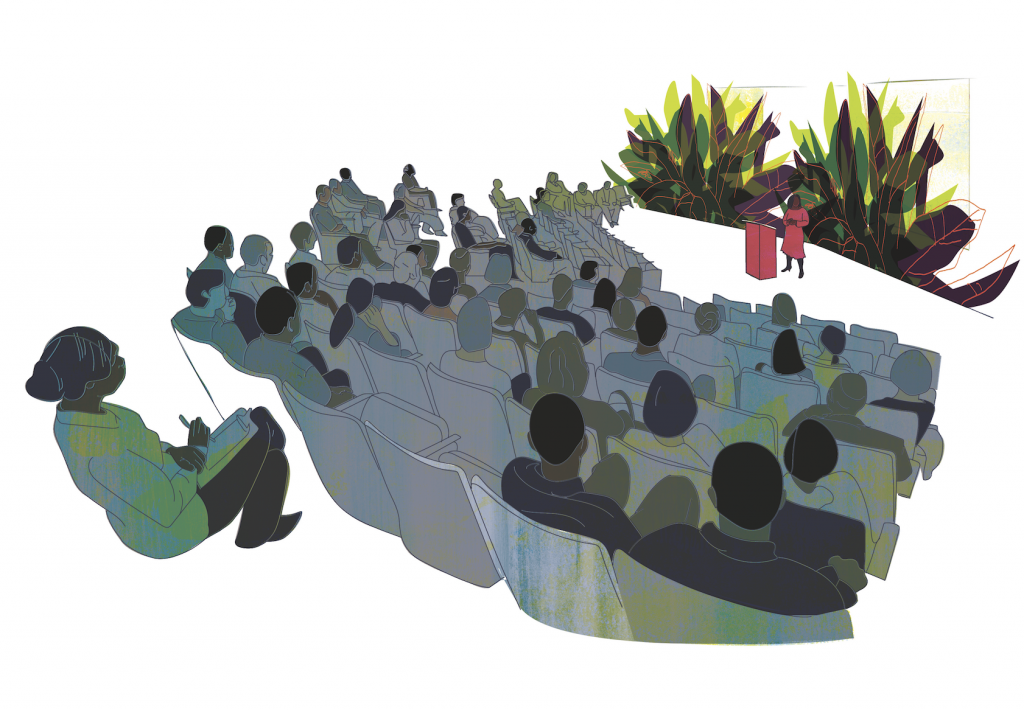
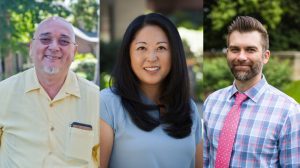 +
+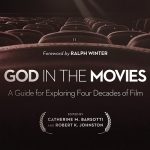


 Before their first child was born
Before their first child was born Their time in the Holy Land became much more than a “final hurrah” for Jon (pictured) and Jan when they befriended their hotel server. Milad and his wife were expecting their first baby at the same time the Huckins expected theirs. Jon and Milad ended up hanging out on the hotel rooftop one night, talking World Cup soccer and impending parenthood while overlooking Herod’s Palace in the Old City of Jerusalem. In the middle of their joking and conversing, Milad grew somber. He looked at Jon and asked, “Why do your people think I am a terrorist?”
Their time in the Holy Land became much more than a “final hurrah” for Jon (pictured) and Jan when they befriended their hotel server. Milad and his wife were expecting their first baby at the same time the Huckins expected theirs. Jon and Milad ended up hanging out on the hotel rooftop one night, talking World Cup soccer and impending parenthood while overlooking Herod’s Palace in the Old City of Jerusalem. In the middle of their joking and conversing, Milad grew somber. He looked at Jon and asked, “Why do your people think I am a terrorist?” In the aftermath of that disaster Jer Swigart (pictured), a young man who had come to take part in the relief effort, was struck by a realization. Working alongside others to clear rubble, distribute aid, and assist with communications between the villages and United Nations representatives, he discovered a God whose presence preceded him everywhere he went
In the aftermath of that disaster Jer Swigart (pictured), a young man who had come to take part in the relief effort, was struck by a realization. Working alongside others to clear rubble, distribute aid, and assist with communications between the villages and United Nations representatives, he discovered a God whose presence preceded him everywhere he went